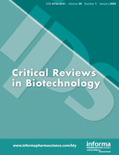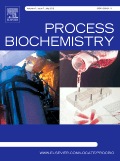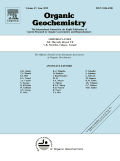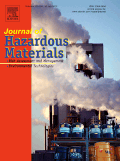
BIODEGRADATION
Scope & Guideline
Connecting researchers to foster impactful biodegradation studies.
Introduction
Aims and Scopes
- Microbial Biodegradation Mechanisms:
Research on the specific microbial processes involved in the degradation of various pollutants, including plastics, pharmaceuticals, and hydrocarbons. - Enzyme and Biocatalyst Applications:
Exploration of enzymes and biocatalysts, particularly laccases and other ligninolytic enzymes, in enhancing biodegradation rates and efficiencies. - Bioremediation Strategies:
Development of innovative bioremediation techniques for contaminated environments, including the use of microbial consortia, bioaugmentation, and phytoremediation. - Impact of Environmental Factors:
Investigation of how environmental conditions, such as temperature, pH, and the presence of co-contaminants, affect microbial degradation processes. - Sustainable Waste Management:
Focus on the integration of biodegradation processes in waste management practices, particularly in relation to organic waste and plastic pollution.
Trending and Emerging
- Microbial Consortia and Synergistic Effects:
There is an increasing focus on the use of microbial consortia to enhance biodegradation, emphasizing the synergistic interactions among different species. - Biodegradation of Plastics:
Research on the biodegradation of synthetic plastics, particularly biodegradable and non-biodegradable plastics, is gaining significant momentum due to environmental concerns. - Waste-to-Energy Technologies:
Emerging themes include the integration of biodegradation processes with energy recovery systems, such as microbial fuel cells and anaerobic digestion for biogas production. - Metagenomic and Metabolomic Analyses:
The application of advanced molecular techniques, including metagenomics and metabolomics, is trending, providing deeper insights into microbial communities and degradation pathways. - Circular Economy and Biodegradation:
A growing emphasis on the role of biodegradation in circular economy frameworks highlights research on waste valorization and sustainable resource use through biological processes.
Declining or Waning
- Traditional Chemical Degradation Studies:
Research focusing solely on chemical degradation processes without biological involvement has decreased, as the emphasis shifts towards integrated biological approaches. - Single Organism Studies:
There is a noticeable reduction in studies centered on the biodegradation capabilities of single microbial species, with a growing preference for examining complex microbial communities. - Static Laboratory Experiments:
Research relying solely on static laboratory experiments for biodegradation assessments is less prevalent, as field studies and real-world applications gain importance. - Focus on Legacy Pollutants:
The emphasis on studying legacy pollutants like DDT and PCBs is declining, as newer contaminants such as microplastics and pharmaceuticals become more relevant. - Limited Scope of Ecotoxicological Assessments:
Research on the ecotoxicological effects of biodegradation products is diminishing, as the focus increasingly shifts towards holistic environmental impact assessments.
Similar Journals

INTERNATIONAL BIODETERIORATION & BIODEGRADATION
Advancing knowledge in biodegradation and bio-deterioration.INTERNATIONAL BIODETERIORATION & BIODEGRADATION, published by Elsevier Science Ltd, is a prestigious peer-reviewed journal dedicated to the field of environmental science, particularly focusing on the biodegradation processes of materials and the bio-deterioration of various substances. With an ISSN of 0964-8305 and E-ISSN 1879-0208, this journal has established itself as a vital resource in areas such as biomaterials, microbiology, and waste management, holding a commendable Q2 ranking across multiple categories. Converging its studies from 1992 to 2025, it offers authors the opportunity to disseminate their research findings to a broad audience of researchers, professionals, and students committed to sustainability and environmental stewardship. The journal's impressive Scopus rankings reveal its significant impact within the academic community, with notable percentiles in both Waste Management and Microbiology. Although it does not offer open access options, the wealth of knowledge published within its pages is invaluable for advancing research and methodologies in bioremediation and waste management strategies.

Chemosphere
Bridging the gap between chemical research and global sustainability challenges.Chemosphere is a prestigious peer-reviewed journal published by PERGAMON-ELSEVIER SCIENCE LTD, focusing on a wide array of critical topics in the fields of Chemistry, Environmental Science, and Public Health. Since its inception in 1972, the journal has become a vital platform for disseminating groundbreaking research, consistently ranking in the Q1 quartile across multiple categories, including Environmental Chemistry, Health, Toxicology and Mutagenesis, and Pollution. Its esteemed position is underlined by its impressive Scopus rankings, with significant placement in leading subsectors such as Environmental Science and Medicine. Although Chemosphere currently does not offer Open Access options, it remains a valuable resource for researchers and professionals seeking to advance their understanding of chemical interactions and their environmental impacts. The journal serves as an essential asset for students and academics alike, parsing complex issues of pollution, health, and toxicology while fostering inter-disciplinary approaches to remedy global challenges in environmental sustainability.

CRITICAL REVIEWS IN BIOTECHNOLOGY
Elevating Biotechnological Discourse with Rigorous ReviewsCRITICAL REVIEWS IN BIOTECHNOLOGY, published by Taylor & Francis Ltd, stands as a leading journal in the field of biotechnology, consistently recognized for its rigorous peer-reviewed articles that impact the disciplines of Applied Microbiology, Biotechnology, and Medicine. With an impressive Q1 ranking in these categories and a significant influence reflected in its Scopus rankings—placing it within the top 5% of Applied Microbiology and the top 4% of Biotechnology journals—the journal serves as an essential resource for researchers, professionals, and students alike. Launched in 1983 and extending its coverage to encompass groundbreaking findings through 2024, it provides a rich forum for insightful reviews and innovative research that propel the field forward. Though not an Open Access journal, CRITICAL REVIEWS IN BIOTECHNOLOGY remains a vital point of reference for ongoing developments, critical analyses, and emerging trends, making it indispensable for those seeking to stay at the forefront of biotechnological advancements.

JOURNAL OF MICROBIOLOGY
Leading the charge in microbiological research and innovation.JOURNAL OF MICROBIOLOGY, published by the Microbiological Society Korea, is a prestigious peer-reviewed journal dedicated to the advancement of knowledge in the fields of microbiology, applied microbiology, and biotechnology. Established in 1996, this journal serves as a vital platform for researchers and professionals from around the globe to disseminate their findings and engage in multidisciplinary discussions pertaining to microbial sciences. With an H-index that reflects its impact, the journal holds a commendable Q2 ranking in key categories including Applied Microbiology and Biotechnology, as well as Medicine (Miscellaneous), which underscores its significance in the academic community. Despite being a subscription-based journal, the JOURNAL OF MICROBIOLOGY aims to contribute to the understanding of microbial processes and their applications, facilitating advancements that are essential in health, industry, and environmental sciences. Researchers, students, and practitioners are encouraged to explore this rich resource for the latest research and trends in microbiology.

PROCESS BIOCHEMISTRY
Advancing biochemical innovation for a sustainable future.PROCESS BIOCHEMISTRY is a premier journal published by Elsevier Science Ltd, dedicated to advancing the field of biochemistry, microbiology, and bioengineering. With an ISSN of 1359-5113 and an E-ISSN of 1873-3298, this renowned journal is recognized for its impactful contributions, as demonstrated by its Q2 ranking in Applied Microbiology and Biotechnology, Biochemistry, and Bioengineering categories as of 2023. Covering a wide array of topics since its inception in 1950, PROCESS BIOCHEMISTRY serves as a crucial platform for researchers and professionals to disseminate innovative findings and develop new insights in enzyme technology, metabolic pathways, and bioreactor design. Although the journal operates under a non-open access policy, it remains vital for those engaged in cutting-edge biochemical research and development. Located in the United Kingdom, it continues to facilitate scientific discourse and foster collaboration among industry experts and academic scholars worldwide.

Bioresources and Bioprocessing
Innovating Bioprocessing for a Greener TomorrowBioresources and Bioprocessing is an esteemed open-access journal published by SPRINGER HEIDELBERG, dedicated to the innovative fields of biomedical engineering, biotechnology, food science, and renewable energy. Since its inception in 2014, the journal has rapidly established itself as a leading platform for high-quality research, boasting a Q2 ranking in key categories such as Biomedical Engineering and Biotechnology, and an impressive Q1 status in Food Science for 2023. With robust Scopus rankings placing it in the top percentiles across multiple disciplines, Bioresources and Bioprocessing serves not only as a conduit for original research but also for critical insights into sustainable bioprocessing techniques that contribute to environmental stewardship. It is particularly aimed at researchers, professionals, and students committed to advancing knowledge in the bioprocessing sphere, promoting evidence-based innovations that leverage biological resources for diverse applications. Emphasizing open access, the journal ensures that cutting-edge research is readily available to a global audience, reinforcing its commitment to scientific communication and collaboration.

ORGANIC GEOCHEMISTRY
Navigating the Complexities of Geological SystemsORGANIC GEOCHEMISTRY, published by PERGAMON-ELSEVIER SCIENCE LTD, is a pivotal journal in the field of geochemistry and petrology, dedicated to the exploration of organic compounds and their interactions within geological systems. Established in 1977, this journal has been an influential medium for researchers, providing significant insights and advancements that have shaped the understanding of organic geochemistry. With an impressive impact factor and a distinguished ranking of Q2 in its category, it sits at the forefront of academic research, currently holding the 46th position out of 154 in Earth and Planetary Sciences according to Scopus, which places it within the top 70th percentile. Although it operates on a subscription basis, ORGANIC GEOCHEMISTRY is recognized for its rigorous peer-review process, ensuring that only the highest quality research is published. Its scope includes an array of critical topics, appealing to geochemists, petrologists, students, and professionals looking to deepen their knowledge and contribute to this dynamic field. With converged publications extending into 2024, the journal continues to play a crucial role in the dissemination of cutting-edge research that addresses global challenges such as environmental change and resource management.

COMPOST SCIENCE & UTILIZATION
Transforming Waste into Wealth.COMPOST SCIENCE & UTILIZATION is a vital academic journal published by Taylor & Francis Inc that addresses the interdisciplinary aspects of composting, recycling, and sustainable waste management practices. With an ISSN of 1065-657X and an E-ISSN of 2326-2397, this journal ensures wide accessibility to its contributions, even though it does not operate under an open access model. Operating from the United Kingdom with a rich history from 1993 to 2024, the journal is ranked in the Q3 quartile across key categories including Ecology, Soil Science, and Waste Management and Disposal. The journal’s Scopus rankings underscore its impact in the environmental sciences, with notable placements in relevant fields, reflecting its importance in promoting innovative research on composting and sustainable practices. Researchers, professionals, and students dedicated to environmental sustainability will find valuable insights and developments relevant to compost science within its pages, making it an essential resource in the quest for eco-friendly solutions.

JOURNAL OF HAZARDOUS MATERIALS
Championing Excellence in Hazardous Materials StudiesJOURNAL OF HAZARDOUS MATERIALS, published by Elsevier, stands as a leading academic platform in the fields of Environmental Chemistry, Environmental Engineering, and Pollution Studies. With a solid impact captured through its Q1 ranking across multiple relevant categories, this journal is essential for researchers focusing on the management and mitigation of hazardous materials. Originating in 1975 and continuing to present insight until 2024, it provides valuable peer-reviewed content that informs best practices within health, toxicology, mutagenesis, and waste management. Furthermore, its impressive Scopus rankings highlight its influence, securing a position in the top percentile among global publications. While access to the journal is not open access, its rigorous approach to impactful research makes it indispensable for academics, industry professionals, and students seeking to deepen their understanding and innovate in this critical area of study.

Research Journal of Biotechnology
Catalyzing discoveries in biotechnology and beyond.Research Journal of Biotechnology is a premier publication dedicated to advancing the field of biotechnology through the dissemination of impactful research articles. Published by Research Journal Biotechnology in India, this journal operates under an Open Access model, facilitating unrestricted access to high-quality research for researchers, professionals, and students worldwide. With an ISSN of 2278-4535 and an E-ISSN of 2278-4535, the journal aims to serve as a comprehensive platform for innovative studies in Applied Microbiology and Biotechnology, Bioengineering, and Biotechnology. Despite its current Q4 quartile ranking in these categories, the journal aspires to extend its influence and visibility in the academic community, aiming for greater impact in the future. The journal features research articles that span a wide array of topics in biotechnology, fostering a collaborative and knowledge-rich environment for national and international scholars. We invite you to explore, contribute to, and engage with the expanding landscape of biotechnological research through the Research Journal of Biotechnology.